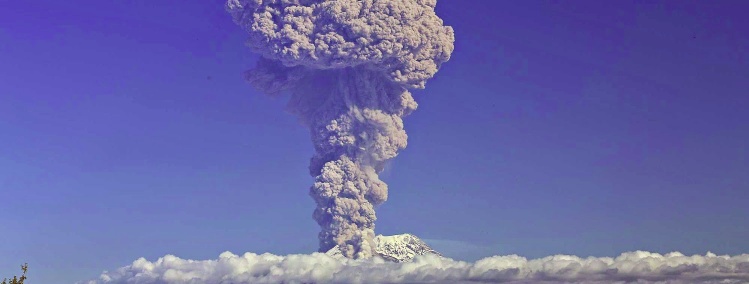Powerful eruption observed at Shiveluch, Kamchatka – Russia

A powerful eruption was observed at Russian Shiveluch volcano at 00:41 UTC on September 24, 2014. Ash plume rose up to 11 km (38 000 feet) altitude.
The eruption generated several pyroclastic flows, some of which surpassed the 350 m high western caldera wall.
The explosion could have been a result of gas pressure that slowly build up under the lava dome's plug of viscous lava, VolcanoDiscovery said.
Alert level was set to red following the eruption, and lowered back to orange afterwards as no new eruptions followed and the ash had dissipated.
According to KVERT's notification issued 06:13 UTC on September 24, the explosive activity of the volcano was finished but ash cloud in size 144×89 km (89×55 miles) continued to move to the north-northeast of the volcano. Satellite data showed this ash cloud was in 23 km (14 miles) of the volcano at 03:48 UTC on September 24.
"It is necessary to say a part of this ash cloud in size 90×26 km (56×16 miles) is drifting at the height about 9 km (29 500 feet) a.s.l. in the distance about 71 km (44 miles) a.s.l. to the north-east of the volcano."
Eruption plume from Shiveluch's explosion on September 24, 2014. Copyright: Y. Demyanchuk/Volkstat.ru
During September 12 – 19, 2014, KVERT reported that during lava-dome extrusion onto Shiveluch’s N flank was accompanied by ash explosions, incandescence, hot avalanches, and fumarolic activity. Satellite images detected a daily thermal anomaly over the dome. On September 14 a video camera recorded a short-duration explosion which produced an ash plume that rose 6 km (19 700 ft) a.s.l.; strong gas-and-steam activity was noted afterwards.
Geologic summary
The high, isolated massif of Shiveluch volcano (also spelled Sheveluch) rises above the lowlands NNE of the Kliuchevskaya volcano group. The 1300 cu km Shiveluch is one of Kamchatka's largest and most active volcanic structures. The summit of roughly 65,000-year-old Stary Shiveluch is truncated by a broad 9-km-wide late-Pleistocene caldera breached to the south. Many lava domes dot its outer flanks.
The Molodoy Shiveluch lava dome complex was constructed during the Holocene within the large horseshoe-shaped caldera; Holocene lava dome extrusion also took place on the flanks of Stary Shiveluch. At least 60 large eruptions of Shiveluch have occurred during the Holocene, making it the most vigorous andesitic volcano of the Kuril-Kamchatka arc.
Widespread tephra layers from these eruptions have provided valuable time markers for dating volcanic events in Kamchatka. Frequent collapses of dome complexes, most recently in 1964, have produced debris avalanches whose deposits cover much of the floor of the breached caldera.
Featured image: Eruption plume from Shiveluch's explosion on September 24, 2014. Copyright: Y. Demyanchuk/Volkstat.ru

interesting
Did people die?